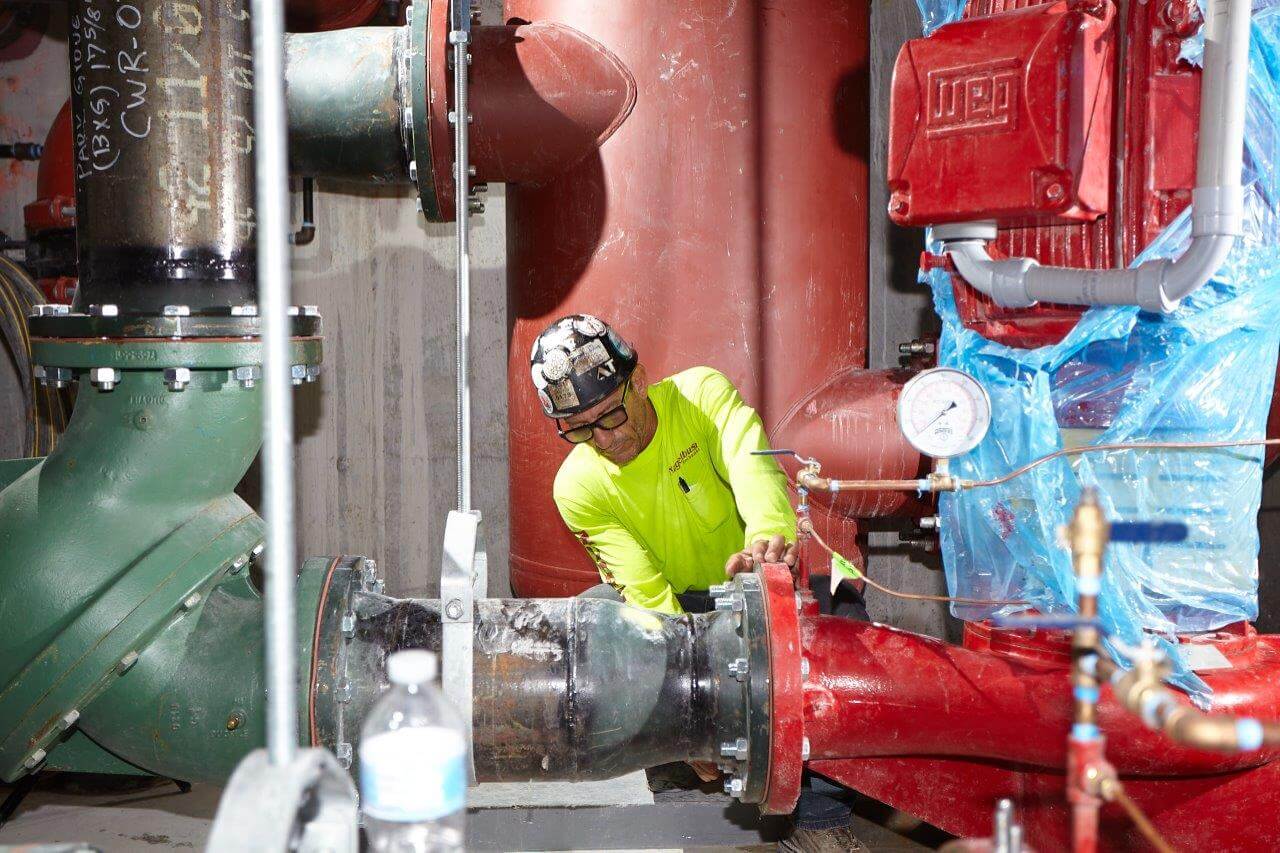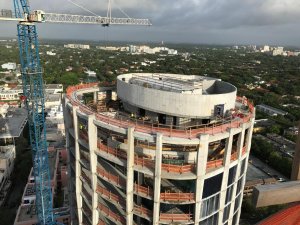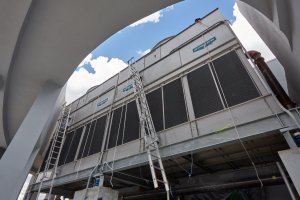
South Florida’s weather poses many challenges, so Nagelbush Mechanical, Inc. relied on EVAPCO cooling towers to withstand the heat, sea air, and high winds for residents of the luxurious three-tower Park Grove complex along the shores of Biscayne Bay in South Florida.
The new towers bring modern architecture to a historic section of the city. Each high rise has 22 stories with high windows that offer grand views of the ocean. The three towers are connected with a common podium structure housing two levels of retail space, a bank, a large restaurant, and parking. Residents of the building expect ample cooling to keep Miami’s heat and humidity at bay. Building managers expect a system that minimizes energy consumption using reliable equipment.

When it came to designing the cooling tower system, engineers from Steven Feller P.E., LLC, sought assistance from Integrated Cooling Solutions, LLC, which provided input on technical aspects of the equipment. Nagelbush was the contractor of choice, with a portfolio containing multiple condominium complexes in Miami and a reputation as a leading mechanical systems installer.
Maximizing tenant space is a priority for real estate developers. Yet, for water-sourced heat pump systems installed at Park Grove, cooling towers are some of the largest pieces of equipment in the mechanical mix. “One challenge was [the mechanical] footprint and getting the right air capacity into the cooling tower space,” said David Fernandez, P.E., LEED-AP, CEO of Integrated Cooling Solutions.
Andrew Sanek, project manager for Nagelbush, described the unique challenge faced by the bank. “The way Park Grove is built, the podium area is a two-story feature,” he said. “The whole thing is constructed with landscaping, trees, and pools that are actually located over the bank. So the bank technically has no roof. Its roof is an interstitial floor below the pool deck. And because the bank didn’t really have a roof, we had to make sure we designed it properly so that adequate air could come in to supply the cooling towers with what they needed.”
Cool Solutions
Cooling plant equipment for towers one and two are similarly sized at 2,000 tons and 2,400 tons, respectively, but smaller for tower three (the Club Tower) at 1,440 tons. Each of these buildings is served by a two-cell EVAPCO cooling tower: Model USS-212-528 for One Park Grove, USS-212-4N28 for Two Park Grove, and USS-29-924 for the Club Tower residences.

“This is a typical type of system for condos in Florida,” Fernandez said. “The cooling towers serve water source heat pumps across the heat exchangers. Each cooling tower is paired with a set of pumps, then a heat exchanger to isolate the loop, eliminating the risk of mineralized scale in the building’s distribution piping, and the heat pumps are also on an isolated loop.”
The cooling towers serve more than just the connected heat pump system. “For fresh air to the building, three Petra rooftop units provide 100-percent outside air, using condenser water for their DX [direct expansion] cooling systems,” said Sanek. “Towers one and two each have two 8,000 cubic feet-per-minute (CFM) rooftop units while tower three has one 21,000 CFM unit because of the larger corridor area in that tower.”
The bank has a fully redundant system with two EVAPCO LSTE-4312-s cooling towers providing a total of 300 tons. “The bank wanted complete redundancy,” said Sanek, “so they have double the equipment in order to achieve 100-percent backup.”
The EVAPCO units offered several advantages to this application. “The units were constructed using stainless steel, which is popular for good reason in south Florida where salty air can be quite corrosive,” said Fernandez. “EVAPCO’s wind pressure tolerances were also important because of the risk of hurricanes.”
As proof, the units stood strong through Hurricane Irma’s category four devastation in September 2017.
Getting Creative
Tower dimensions for the required capacities were critical because of the tight spacing available. “The footprint and the layout presented a challenge,” said Fernandez, “and we had to get creative with how these units were arranged. Fortunately, the EVAPCO units are modular and can be oriented for the piping to work.”
Having sufficient airflow around a cooling tower is fundamental to its performance, which is why most cooling towers are located on open rooftops. For Park Grove, however, cooling towers did not match the building’s sophisticated look.
Hiding a cooling tower on the rooftop of a 22-story building is not easy. “We put these units in a recessed area of the roof with three walls so only one side was available for airflow,” said Sanek. “The parapet walls are 10 feet high around all the rooftop equipment to hide it. We had one side that was basically all louvers to allow airflow to the cooling towers.”
Sanek said the EVAPCO products “are very easy to work with, and the design team gave excellent support to the engineers. So most issues were already taken care of before installation.”
“Today, Park Grove is one of the trendier places overlooking Biscayne Bay,” said Fernandez.
For more information, visit www.evapco.com.


